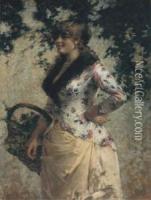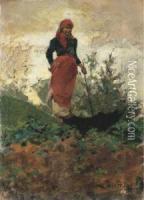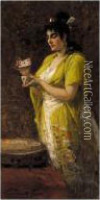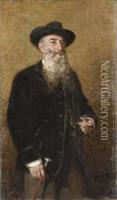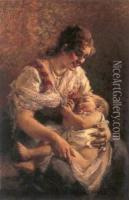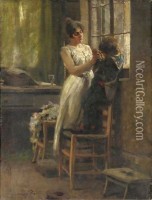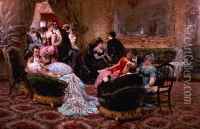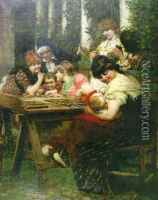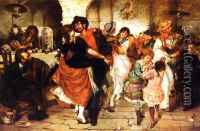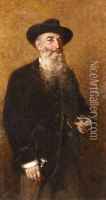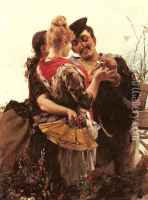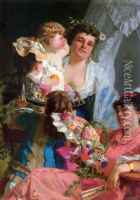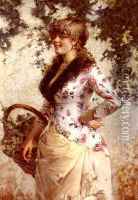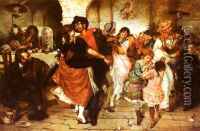Egisto Lancerotto Paintings
Egisto Lancerotto was an Italian painter, born on August 26, 1847, in San Donà di Piave, near Venice. He was a notable artist of the 19th century, primarily known for his historical and genre paintings. Lancerotto displayed artistic talents early in his life and pursued his passion for art by enrolling at the Academy of Fine Arts in Venice, where he studied under the guidance of Pompeo Marino Molmenti and Michelangelo Grigoletti.
During his formative years, Lancerotto was influenced by the Romantic movement and the works of Francesco Hayez, who was one of the leading artists of Italian Romanticism. Lancerotto's style evolved over time, incorporating elements of Realism and later, the Macchiaioli aesthetic, which emphasized the use of bold strokes and the play of light and shadow.
Lancerotto gained public recognition and acclaim for his work, which was characterized by dramatic narratives and historical accuracy. His paintings often depicted scenes from Italian history, literature, and everyday life, capturing the spirit and the social context of the time. He participated in numerous exhibitions, including the prestigious Venice Biennale and the Exposition Universelle in Paris, where his art was well received and enhanced his reputation.
Beyond painting, Lancerotto also explored fresco and was involved in the decoration of several buildings, bringing his historical and literary scenes to grand architectural settings. His mural works can be found in various public spaces and private collections, attesting to his versatility and skill in different mediums.
Egisto Lancerotto's contribution to Italian art was significant, and his legacy continued after his death on September 3, 1916. He left behind a body of work that not only reflects the artistic trends of his time but also provides a visual chronicle of Italian culture and history. His art remains a subject of study and appreciation among art historians and enthusiasts alike.

